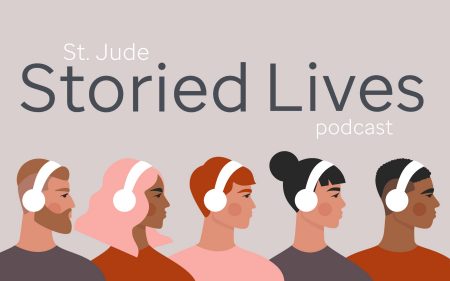
Landmark study finds new gene mutations that drive acute lymphoblastic leukemia (ALL)
St. Jude scientists helped lead a comprehensive genomic analysis to uncover the impact of genes on the treatment and outcome of the world’s most common childhood cancer.

October 06, 2022 • 3 min

When he was 10 years old, a leukemia relapse brought Juan Sebastián 2,300 miles from his native Colombia to St. Jude Children’s Research Hospital. Relying on decades of research to produce novel combinations of therapy, doctors treated his second bout of acute lymphoblastic leukemia with a bone marrow transplant, chemotherapy and radiation therapy. And it worked. He returned home to Colombia, has been cancer free for four years and just graduated high school with plans to train as a doctor.
Cases like Juan Sebastián’s show how St. Jude doctors rely on the latest science to tailor precise, more effective treatments for patients with ALL, the most common childhood cancer in the world. Scientists at St. Jude are now learning more than ever about ALL by helping lead the nation’s largest comprehensive analysis of how genomes contribute to ALL, using samples from nearly 2,800 patients. St. Jude investigators collaborated with hospitals around the country in the Children’s Oncology Group to collect samples over more than a decade to better understand the complex nature of ALL.

St. Jude patient Juan Sebastian
Scientists studied patterns of alterations in the genomes of leukemia cells and found new genes potentially responsible for the development of ALL. The research will lead to a better understanding of how ALL behaves differently in each child, especially in the case of recurrent relapses and others who do not respond well to therapy.
Scientists found further evidence ALL is not one single disease that affects every child the same way, but rather a collection of subtypes, some progressing differently in children. Earlier understanding of the subtypes was limited a decade ago, but this latest research supports the existence of more than 20 subtypes of the disease. The subtypes have distinct alterations that pose different risks for children with the disease and support the need for more precise targeted treatment. The study also provided more evidence that UV light, like that from the sun, may play a role in the development of ALL.
“The study provides an invaluable resource to the scientific community to design experiments to understand the process of leukemia formation, to dissect the role of individual mutations, and to develop more effective therapies,” said co-corresponding author Charles Mullighan, Ph.D., M.B.B.S., Deputy Director, Comprehensive Cancer Center at St. Jude.
The research was unique because it included 2,754 pediatric ALL patient samples, the largest such cohort ever published. As a comparison, earlier studies have typically studied hundreds of samples, or fewer.

Jinghui Zhang, Ph.D and Charles Mullighan, M.B.B.S., M.D.
The study published in the journal Nature Genetics this month has identified 376 significantly mutated genes that potentially drive cancer development, and 70 of those genes had never been linked to ALL.
When researchers understand the impact of genes and their differences on cancer outcomes, physicians can sequence a patient before starting treatment. This allows doctors to personalize treatments to individual patients based on their genetics and likelihood of responding to different therapies.
“The study demonstrates the power of the data,” said co-corresponding author Jinghui Zhang, Ph.D., chair of the St. Jude Department of Computational Biology. “If you don't have a sufficient number of patient samples, you lack the statistical power to find drivers present at a low prevalence. Once we had the power, we found a subgroup of new drivers involved in ALL development.”
Six decades of progress in ALL

St. Jude has been a pioneer in the diagnosis, care and treatment of ALL since its founding in 1962. Within nine months of its opening, the hospital launched its first ALL study, TOTAL Therapy Study I, a novel strategy that combined multiple anticancer drugs with treatment to kill leukemia cells in the central nervous system.
Researchers built on the findings in subsequent TOTAL Therapy studies, developing new protocols for patients based on discoveries at St. Jude and advances around the world.
By 1968, survival rates for ALL had improved from nearly zero to 50 percent. In 1970, St. Jude announced something that just a decade prior would have been considered inconceivable: Leukemia was no longer an incurable disease.
Over the years, advancements at St. Jude have continued in survival rates and treatment for ALL, including when Ching-Hon Pui, MD, found that children with ALL could be cured without brain irradiation, a stunning discovery that reduced devastating side effects of treatment.
Today, St. Jude doctors use genetic information to individualize treatment for each child. And they also emphasize quality-of-life issues with staff working to help survivors thrive into adulthood.
Thrive like Juan Sebastián, who hopes to return to St. Jude as a doctor.

“St. Jude is hope, it’s light and everything to me,’’ he said. “They saved my life. I don’t know how to explain what St. Jude means to me, but it’s just hope to be alive and to continue to grow.”








